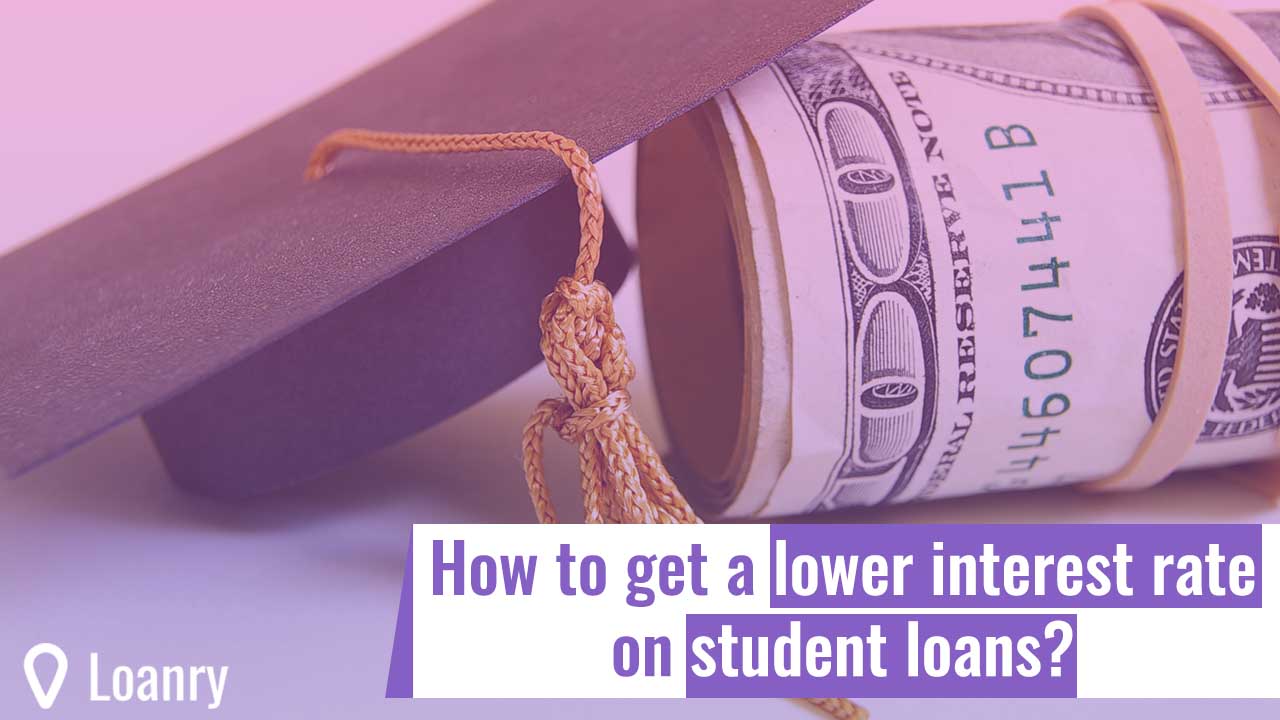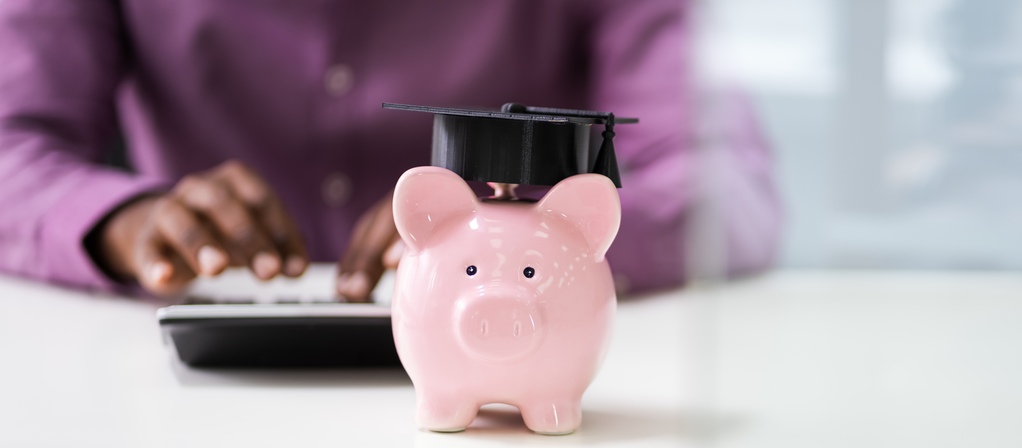
Education is not cheap in any country in the world, and the United States is no exception. In addition, if you ask yourself what is the cost of a university in the United States – leaving aside the Ivy League – you would receive an answer similar to this: $55,000 a year plus basic expenses, that is, housing rent, transportation, and food – in addition to books – which translates into a figure that could reach $15,000 per year. For that reason, many undergraduate and graduate students choose to apply for federal student loans. Now, let us look at some ways of how to get a lower interest rate on student loans and the options students have available to them.
How to Get a Lower Interest Rate on Student Loans?
Upon receiving a student loan, you will receive a capital that you will have to pay back later with interest – but it is subject to certain payment conditions that make it one of the cheapest options for most students. Yes indeed. If you decide to apply for a student loan, you need to make sure of several things, including:
- Who makes and distributes the loan
- The terms and conditions of payment
- The monthly payments and interest rate
That is why we decided to delve a little deeper into this topic.
The Types of Loans
An educational loan, also known as a student loan, is nothing more than a type of loan in which the lender disburses enough money to pay for an undergraduate or graduate university degree and, generally, requires its repayment in installments that must be paid after the college student graduates. The repayment time, interest, and other conditions will depend on the lender and could also depend on the amount of money the student needs.
Student loans can be granted by the federal government, or from private sources – such as a bank or any other financial institution – or other organizations. Loans made by the federal government are known as federal student loans, and they generally have more benefits than loans obtained through a bank or any other private institution.
Choosing the Right Loan
The United States Department of Education offers federal student loans. These credits are in compliance with the Federal William D. Ford Direct Loan Program. Under this program, the Department of Education becomes the lender. Now, first of all, you should know that there are four different types of federal student loans and that means, you have the option of choosing your student loans very carefully to get the lowest interest rate.
Direct Unsubsidized Program Loans
They are those student loans granted to university students, graduates, and professionals who qualify and whose eligibility is not determined by their financial condition.
Subsidized Direct Loan Program Loans
They are those student loans granted to eligible university students, that is, those who demonstrate that they have a financial need. In this case, the Department of Education helps them cover the costs of higher education, be it at a university or vocational school.
PLUS Loans From the Direct Loan Program
These are loans granted to dependent graduates, professionals, and parents of college students who need help paying educational expenses not covered by other financial aid. In this case, eligibility is not based on the applicant's financial need, but the credit score is examined. Borrowers with a regular credit score may have to meet some additional requirements in order to qualify.
Direct Consolidation Loans
This type of loan is designed to combine all student loans into one loan servicer. Sometimes this allows graduates to pay off their credit more comfortably.
Ways to Lower Interest Rate
There are several ways of how to get a lower interest rate on student loans. Some of these ways include:
- Cosigning with someone who has good credit
- Refinancing your student loan after you have improved your credit
- Paying down most of the balance of your student loan
- Extending the loan terms
- Your income
- Automatic payments
- Negotiating with Other Lenders
Cosigning
When you cosign a loan with someone who has good credit, you have to make sure that you maintain a good payment record or you can destroy the person’s credit. This person has to be someone you know well or a family member. Once you continue to maintain a good payment record, you can refinance the loan where you no longer need your cosigner. If you have the funds to pay off more than your monthly payment or pay down a considerable amount of your loan balance, you can ask your lender for consideration for a lower interest rate.
Refinancing
Refinancing a student loan is usually the best way to lower the rate of interest. However, in this situation, it would be best to have improved your credit score where you do not need a cosigner. It would be also nice to have increased your income. Your overall situation should have changed since you obtained the first student loan. If you are refinancing with the initial lender and have maintained a good payment record, you could be eligible for a loyalty discount, which would positively affect your interest rate.
The average public university student borrows $30,030 to attain a bachelor’s degree.
Paying Down Most of the Balance
This won’t directly influence your interest rates or make them lower, but it will help accrue less interest over time. The longer you take to pay off your loan, the more interest you’ll pay. If you direct any additional income you have to your loan and get rid of it faster, you can save a lot of money that would go towards paying interest. On average, if you manage to pay your debt 2 years before it was predicted, you could save around $2000.

Extending the Loan Terms
Another way to lower your interest rate is to extend the terms of the loan so that you pay less each month and thereby have a lower rate of interest. Of course, your loan payments will last longer. But it gives you some financial relief over time until you might improve your financial situation.
Your Income
Your income also plays a very important part in the kind of interest rate you get. You have to show the lender that you have a decent amount of cash flow. This will let the lender know that you have the ability to pay down the loan in the allotted timeframe given. Your income will decide the length of the loan. Usually, five years is a reasonable period of time when you have the appropriate income.
Automatic Payments
If you sign up for automatic payments, this shows the lender that you are serious about paying off your loan. And if you request a lower interest rate, the lender may oblige. Some lenders offer interest rate discounts to those who enroll in the automatic payment method.
Negotiating With Lenders
If you are ready to refinance and have been paying your student loan on time, boost your credit score, improve your financial situation, and can show lenders you are creditworthy for a lower interest rate, the best thing to do is to shop around. This is where you can negotiate with lenders for a lower interest rate. You can even negotiate with your current lender, giving an ultimatum that you have other lending options. Most lenders will want you to stay with them and may consider giving you a lower interest rate to keep you, especially, if you are a good customer.

Factors to Consider
Lowering your interest rate means that you have to consider certain factors, which include:
- Your income
- The loan type; whether private or federal
- Loan status; whether you are current or in default
- Budget
- Credit score
The Benefits
Although you should not be afraid to apply for a student loan, you need to evaluate your options and choose the best alternative. Remember that federal student loans come with myriad benefits, at least when compared to other private credit alternatives. Let us see some of these benefits:
Interest rate: The interest rate on federal student loans is not only fixed, it is also usually lower than the private loans that you will find at banks and other financial institutions. It is even much lower than that of a good credit card.
Credit check: Generally, you won’t need stellar credit or an endorsement to get a federal student loan, but it is mandatory for the private lender. The federal government in many cases does not even verify the credit. If you get a federal student loan, you don’t need to start paying off your student loan right away. The payment period will begin usually six months after you finish college or reduce your class schedule below the hours of a part-time student. If you are able to show that you are in a precarious financial condition, the government will pay the interest on some of your loans while you are in school, and even after finishing it.
Conclusion
If you want to know how to get a lower interest rate on student loans, it is best to do your research. Find out what banks or other private financial institutions are offering. And how the federal government can work with you for a lower rate. There are so many possibilities. You just have to seek the information. What better place to do so than the Goalry platform? Once you enter the platform, go directly to the Loanry store to check out all your options.

Cheryline Lawson is a personal finance writer who lives in Fort Lauderdale, Florida with her husband and two boys. She has worked as a mortgage broker and loan processor in the most recent past. She shares a lot of her experiencing in financial planning, real estate investing and budget advice with national media outlets like GoBankingRates, Intuit, Bustle, Buzzfeed and CBS News. Ms. Lawson is a graduate of Broward College in Florida. She came into her own as a mortgage broker after realizing so many people need help to get into their first home. She has a passion for helping others, especially those who need financial advice to use in their daily lives.
